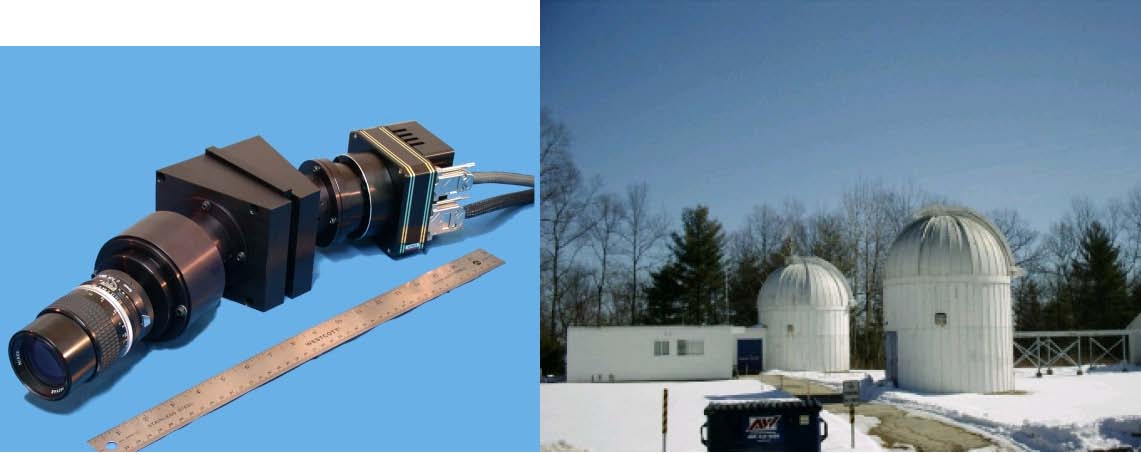Emerald McKinney
PAL UROP Summer 2009 August 31, 2009
For students looking for opportunities and potential futures, Undergraduate Research Opportunities Programs (UROP) is a great way to test a particular subject. As an aeronautics and astronautics majoring student, I hoped to learn more about Planetary Sciences as a possible minor or career, and this observing summer position has allowed me a view into the life of an astronomer.
My time was split into two sections, depending on the weather. If it was a clear night, I would get to drive to Wallace Observatory before sunrise and take pictures of particular stars or planets throughout the night. If the forecast was cloudy or rainy, I could drive up to Wallace during the day and help with engineering projects concerning the telescopes. The students would always work in pairs to promote teamwork and efficiency, along with graduate students.
The nighttime portion centered on taking pictures of certain stars and planets to form light curves that would be looked at and studied later. The night would start with aligning, or homing, the telescopes and then focusing them to take accurate photographs. When the object of interest rose above the tree line, then we would begin taking as many pictures of it as possible that would count as decent data. Many nights, we would split the task up so that one telescope would be focused on one object, and another would be looking at another. However, not all planetary objects are up at the right time, so both telescopes could be collecting the same data at anytime to be analyzed separately. To clean up the photographs, we would take dark, bias, and flat-field shots as well. These would be used to reduce imperfections from dust and other telescopic issues to get a clearer and brighter image. Most of my knowledge gained from this UROP came from the night portion, as I began to understand the details of Planetary Sciences through my time with the telescopes.
When there were few clear nights, the students would travel to Wallace Observatory during the day and help out with engineering projects. These projects would vary from fixing and cleaning telescopes to clearing old data off of the numerous computers used during the night. Much of my time was spent on the newest website for the observatory. This involved inspecting the equipment and documenting their features as clearly and thoroughly as possible. Another project I was involved with shortly was setting up the newest spectroscope. The days spent at Wallace were very helpful for the observatory, as most of the projects were finished quickly because of the extra pair of hands.

Although I only worked half of the summer, my time at Wallace Observatory was time spent well. An entirely new pathway is open to the students involved in these projects, as we are equipped with valuable knowledge and skills.